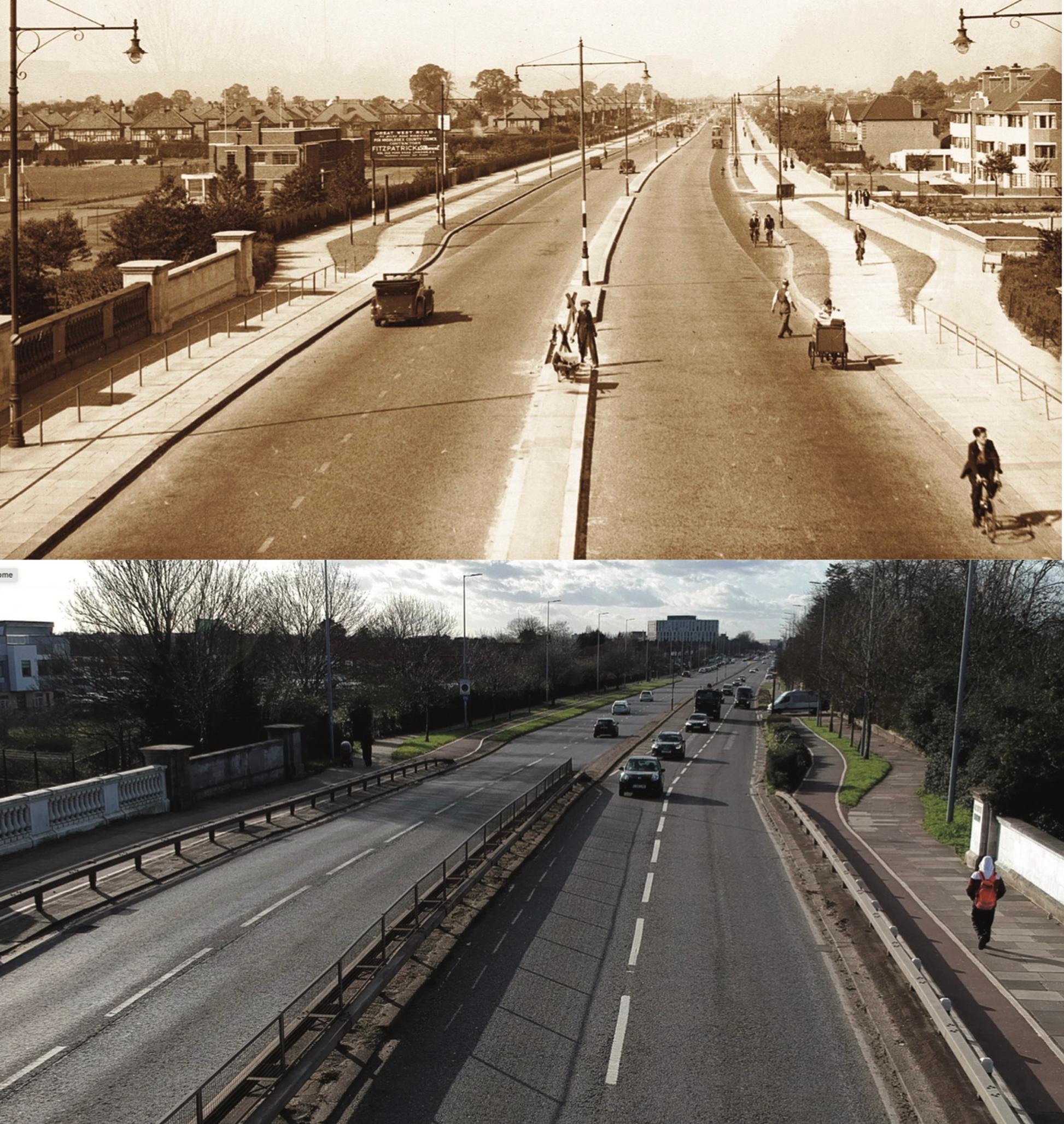

A plethora of historical content, data, maps and images relating to more than 100 forgotten cycle tracks across the UK has been posted on multi-media website BritishCycleTracks.com
Some of these cycleways could be brought up to modern standards and incorporated into road networks, says journalist and historian Carlton Reid, who carried out the research – partly paid for with grants from the DfT and others – over the past seven years.
His 120,000-word study forms the backbone of the website, which includes then-and-now swipeable maps and images.
Between 1934 and 1945, the Ministry of Transport paid local authorities to build 100-plus ‘cycle tracks’ modelled on the cycleways of the Netherlands, says Reid. Many of them were 9ft wide. The website documents “why the cycleways were built, how they were used, and why they faded from memory”.
Many of Britain’s 1930s-era cycle tracks were “lost” or forgotten about within 10 years of their construction.
Between 1930 and 1935, the numbers of cyclists doubled in the UK, and officials worried that the explosion in cycle use would reduce the utility of motoring, Reid says. “By 1939, there were twelve million cyclists and just two million motorists. Cycle use plummeted after 1949, leading to the ossification of the MoT’s ambitious- for-the-time cycle route network.”
By the 1960s not even officials within the Ministry of Transport knew that the UK government had largely financed the 500 miles of Dutch-style cycleways, mostly built beside the new arterial roads of the 1930s and 1940s.
Many of the cycleways still exist, covered by grass or are “wrongly thought to be service roads for motorists”. Reid says: “Much of the original detective work was done by searching on Google Street View. Nearly 500 miles of routes have been plotted on the project’s online map.” Others were “surmised” from local authority archive searches
It is possible that some of these forgotten cycle tracks could be revamped, according to Reid. For example, Leicester City Council used the research as part of its successful bid for part of a £2.2m DfT-funded renovation project. Reid hopes that other councils will use information on the website to back up funding bids to revive their tracks.
Many of the cycle tracks are hidden in plain sight while others are buried, Reid says. “Several have remained in use as cycle tracks, but there is little local knowledge that the infrastructure is more than 80 years old.”
Reid’s project has been backed by former transport secretary Lord Young of Cookham, who said, “this 1930s cycleways project looks to be excellent value for money as it could resurrect already-built infrastructure at a fraction of the cost of new infrastructure”.
While more than 100 schemes have been identified and recorded, not all should or could be rescued – some were “white elephants” at the time, and many remain so today, says Reid.
“There are many benefits – to motorists, cyclists, and pedestrians – to having protected cycleways, but very often, it is claimed that there is no space to provide such separated infrastructure. This project has found that there are many period cycle tracks where the space was made available and, in many cases, is still there but often misidentified or hidden in plain sight.”
Carlton Reid’s research into the forgotten cycleways was carried out in partnership with John Dales, Director of Urban Movement.
His company produced a report for the DfT that evaluated the upgrading potential of 12 cycle tracks and included engineering drawings.
Of the 12 schemes, for which Urban Movement provided engineering diagrams, Dales said most of the local authorities concerned were “highly interested” in using the design work in future bids for funding from Active Travel England.
Urban Movement assessed how the 12 cycle tracks could be revived and renovated — with local authority buy-in — meshing them into modern urban and edge- of-urban networks.
The 12 cycleways are:
1. Links Road, Blyth,
Northumberland
2. The Links, Whitley Bay,
North Tyneside
3. Euxton Lane, Euxton/
Chorley, Lancashire
4. Formby Bypass, Sefton,
Merseyside
5. Harpfield Road, Stoke-on-Trent 6. Arnold Road, Nottingham
7. Raynesway, Derby
8. Melton Road, Leicester
9. Kenilworth Road, Coventry 10. Marston Road, Oxford
11. Uxbridge Road, Hayes,
Hillingdon
12. Mickleham Bypass, Surrey
TransportXtra is part of Landor LINKS
© 2025 TransportXtra | Landor LINKS Ltd | All Rights Reserved
Subscriptions, Magazines & Online Access Enquires
[Frequently Asked Questions]
Email: subs.ltt@landor.co.uk | Tel: +44 (0) 20 7091 7959
Shop & Accounts Enquires
Email: accounts@landor.co.uk | Tel: +44 (0) 20 7091 7855
Advertising Sales & Recruitment Enquires
Email: daniel@landor.co.uk | Tel: +44 (0) 20 7091 7861
Events & Conference Enquires
Email: conferences@landor.co.uk | Tel: +44 (0) 20 7091 7865
Press Releases & Editorial Enquires
Email: info@transportxtra.com | Tel: +44 (0) 20 7091 7875
Privacy Policy | Terms and Conditions | Advertise
Web design london by Brainiac Media 2020